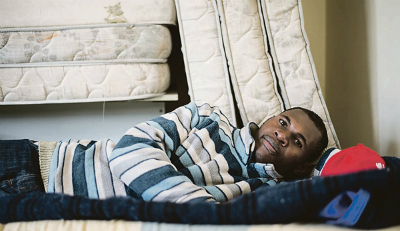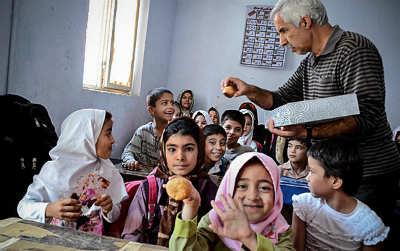By Adèle Charbonneau
According to current estimates, as many as almost seven-million refugees and asylum seekers are living in cities, potentially more than half of the world's refugees. Refugees are more often fleeing to cities instead of camps, creating an important challenge for urban authorities. In view of the current crisis in Europe, tackling inequality and poverty in cities requires attending and welcoming refugees to guarantee them decent living conditions and future opportunities. Learn from four cities that have developed programs to assist refugees and reduce their vulnerability in their new environments.
Refugees consider Curitiba, Brazil, a safe, quiet town, but prejudice there is still very strong, the lack of jobs is problematic, and the support structure is still being created. One of the oldest institutions to offer help to migrants is Pastoral do Migrante. At its headquarters, it registers new residents daily, provides documents, makes referrals for employments, and gives legal advice, as well as all kinds of emergency aid. Similarly, an initiative of BS Colway Tires and the Department of Education, Vila Cidadania is a center where extracurricular educational activities are offered for students from the public school system. Another program is Helping Hand, a website that gathers names and contact information of support entities, such as religious sites, consulates and schools, in five languages. The government is also doing its part through the State Committee for Refugees and Migrants and the Memorandum of Understanding to welcome Colombian refugees living in Ecuador into Brazil.
In Iran, there are more than two-million Afghan emigrants, usually among the poorest and with the lowest-income occupations. Most Iranian schools refuse to register Afghan children, especially if they do not own residency permits. The Society for the Defense of Street and Working Children was formed in 2003 to abolish all kinds of child labor in Tehran. One of their priorities is working with children from poor Afghan families. The society holds classes in their office, located in a poor neighborhood of Tehran. The Society tries to increase the knowledge of the poor families about their children's education, and teaches them ways to improve their condition. Their methods also include teaching social skills to the children. Partly due to these efforts, the Supreme Leader of Iran recently issued an order by which all emigrants, even those without a residency permit, can register their children in Iranian schools free of charge.
Migrant workers have been flowing into HCMC, Vietnam, ever since the 1990s, as it is a city of business and opportunity. Children from migrant workers have faced difficulties in getting free public health services and in enrolling in public education. For instance, children of migrants are put at the end of the priority list for enrollment in public kindergartens and schools. Fortunately, there have been a number of corrections and improvements with regard to HCMC's health insurance policies. As a result, almost all children of migrant workers now have health insurance cards and children under the age of six now receive nation-wide free public health insurance. In 2008, the HCMC Education Department also required manufacturing zones to set aside 5,000 square meters to build kindergartens for children of workers, most of them migrants. Six years later, among 15 manufacturing zones, four kindergartens have been built, one of which is currently operational.
In a context where poor South Africans struggle to find work and service delivery promises are often perceived as empty, it is often African foreigners with whom they live side by side who become the targets for anger and frustration. In May 2008, these frustrations exploded into countrywide xenophobic attacks, a crisis repeated in April 2015. One example of an altogether different approach is by a Johannesburg-based non-governmental organization, the Sultan Bahu Centre (SBC). In 2008, the organization went into areas where attacks took place to try to use soccer as a means around which to build friendships and to help integrate foreign nationals back into society. A soccer team known as "Sultan Bahu FC" was formed, made up of immigrants and refugees from all across Africa. The club's admirable ethos, promoting unity and tolerance, has been matched only by its stunning success in the South African football league.
Check out more of the discussion on inequality and the urban poor on URB.im and contribute your thoughts.
Photo credits: Junior Nelson, Haitian sent by the government of Acre to Curitiba, in Vila da Cidadania / Henry Milléo, Gazeta do Povo and Fararu

